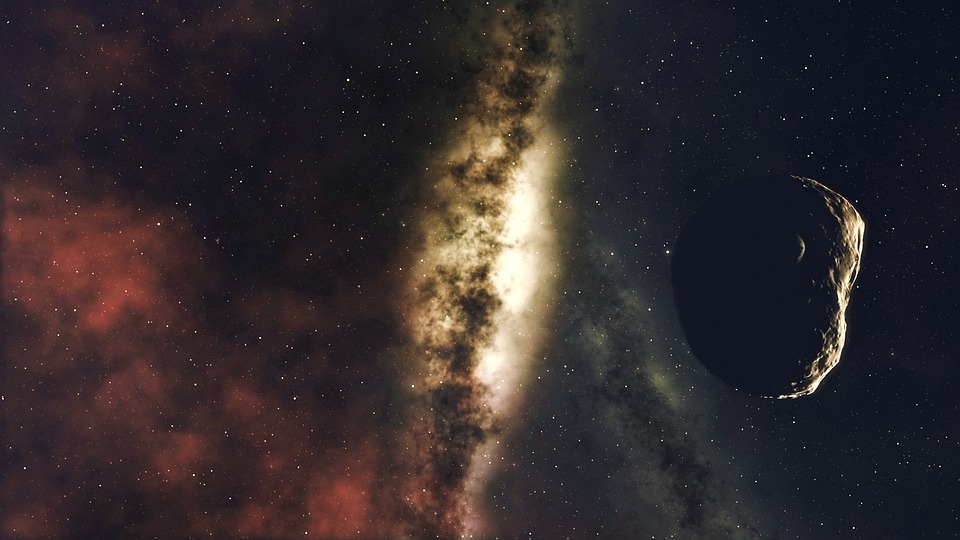More space rocks seem to be approaching Earth’s territory, and a new report reveals another one may bring in disasters. NASA has spotted an asteroid traveling at 63,000 miles per hour, and there is a possibility that it can impact the Earth.
Express reports that the space agency recently tracked down an asteroid named 101955 Bennu but formally known as 1999 RQ36, hurtling towards Earth at a rapid speed of 63,000 miles per hour. NASA has not only labeled this a Potentially Hazardous Object or PHO, but they have also classified RQ36 with the second-highest rating on the Palermo Technical Impact Hazard Scale. Some experts have already warned the space agency to take action should the asteroid enter the atmosphere as it can bring on calamities and disasters once it hits.
As to when it can strike Earth, experts predict that RQ36 may strike the planet in the last quarter of the 22nd century, which is still decades away. Experts predict that it may happen around the years 2175 or 2196.
This asteroid measures about 1,640 feet in diameter, which is equal to the size of the Empire State Building in New York. RQ36 also orbits around the sun once every two years, and once every six years, it makes a close approach with Earth. The closest it has usually gotten is within 0.002 astronomical units, or 185,000 miles, which is nearer than most asteroids that have been classified as Near-Earth Objects have gotten. RQ36 also weighs 68 million tons and is traveling at a speed of 63,000 miles per hour.
Meanwhile, Express also reports the potential disasters that will happen when another kind of asteroid manages to strike the Earth. The astronomers at NASA revealed that over the course of a few hundred thousand years, asteroids that would measure beyond a kilometer could potentially kill millions when it strikes, or cause bigger disasters. They went on to say that the debris would come from the impact would trigger acid rains while blocking sunlight and even firestorms as a result of the remnants of the space rock falling on the surface of the planet.



 Black hole, neutron star or something new? We discovered an object that defies explanation
Black hole, neutron star or something new? We discovered an object that defies explanation  If life exists on Jupiter’s moon Europa, scientists might soon be able to detect it
If life exists on Jupiter’s moon Europa, scientists might soon be able to detect it  Customizing mRNA is easy, and that's what makes it the next frontier for personalized medicine − a molecular biologist explains
Customizing mRNA is easy, and that's what makes it the next frontier for personalized medicine − a molecular biologist explains  The mystery of consciousness shows there may be a limit to what science alone can achieve
The mystery of consciousness shows there may be a limit to what science alone can achieve  Why is the universe ripping itself apart? A new study of exploding stars shows dark energy may be more complicated than we thought
Why is the universe ripping itself apart? A new study of exploding stars shows dark energy may be more complicated than we thought  Dark energy is one of the biggest puzzles in science and we're now a step closer to understanding it
Dark energy is one of the biggest puzzles in science and we're now a step closer to understanding it  Larger and more frequent solar storms will make for potential disruptions and spectacular auroras on Earth
Larger and more frequent solar storms will make for potential disruptions and spectacular auroras on Earth  Tatahouine: 'Star Wars meteorite' sheds light on the early Solar System
Tatahouine: 'Star Wars meteorite' sheds light on the early Solar System  The rising flood of space junk is a risk to us on Earth – and governments are on the hook
The rising flood of space junk is a risk to us on Earth – and governments are on the hook  Why some people don't trust science – and how to change their minds
Why some people don't trust science – and how to change their minds  Six space missions to look forward to in 2024
Six space missions to look forward to in 2024  The brain is the most complicated object in the universe. This is the story of scientists’ quest to decode it – and read people’s minds
The brain is the most complicated object in the universe. This is the story of scientists’ quest to decode it – and read people’s minds  What is minoxidil, the anti-balding hair growth treatment? Here’s what the science says
What is minoxidil, the anti-balding hair growth treatment? Here’s what the science says  Orbital resonance − the striking gravitational dance done by planets with aligning orbits
Orbital resonance − the striking gravitational dance done by planets with aligning orbits 































